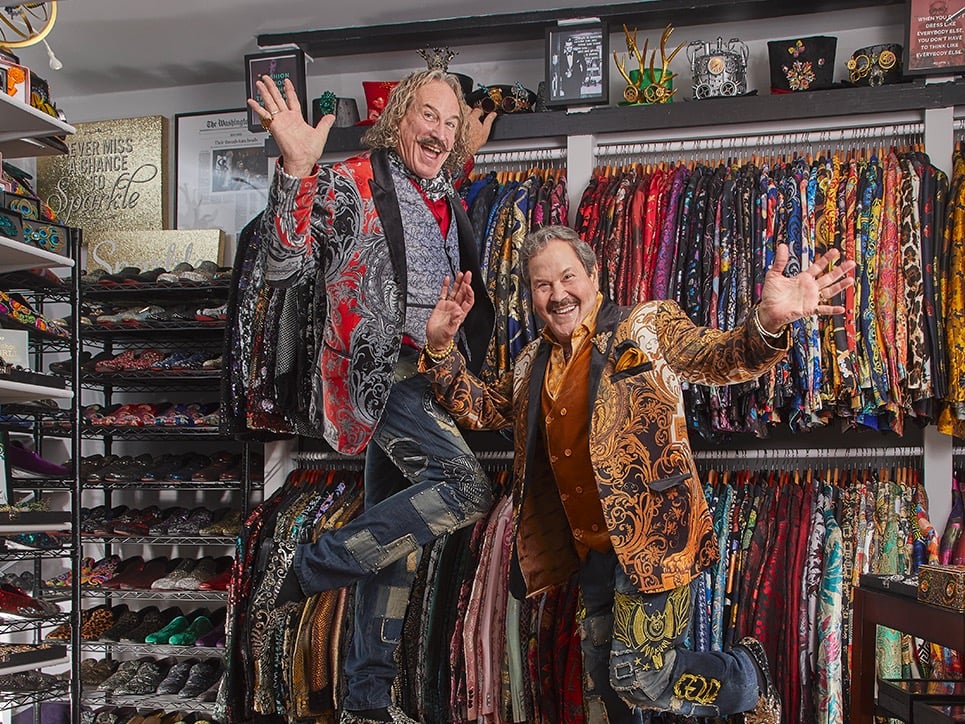As a 30-year-old woman who's determined to keep my skin looking good as I grow older, I try to keep track of the latest antiaging products.
I might as well quit my day job.
With new formulations (day serums, night serums), new names (Dr. Perricone, Dr. Brandt), and new ingredients (soy protein, actual human DNA) coming out daily, tracking wrinkle reducers could be a full-time task.
"It's a jungle out there," says Chevy Chase dermatologist Robert Carnathan.
What products and ingredients really work? To navigate the world of skin care, I talked to dermatologists and aestheticians. Here's what I learned.
1. Retin-A is still the gold standard.
Only a few products are backed by clear-cut medical evidence showing they reduce wrinkles. Retin-A and its close relatives are among them.
Retin-A, Renova (a less-drying form for older skin), Differin (a retinoid prescribed for acne), and Avage (the latest topical form of vitamin A) belong to a class of vitamin A or vitamin A-like products called retinoids. Many people can tolerate one of these products, which can be obtained by prescription only.
"Retinol," found in many over-the-counter creams, contains vitamin A in much lower concentrations. The theory behind retinol is that some of it gets converted to Retin-A when it penetrates the skin, says Bethesda dermatologist Ronald Prussick. But so little conversion occurs that the effects are small, he says.
"Retinol products are just talk," says Dr. Richard Castiello of Chevy Chase. "They're playing on the 'retin' name."
2. Alpha-hydroxy acids are another proven weapon.
"In terms of efficacy, you really have to put the retinoids and alpha-hydroxy acids (AHAs) at the top of the list," says DC dermatologist Carmen Williams.
AHAs–a broad category that includes lactic and glycolic acids–work much the same way as retinoids. Both strip away the very top layers of the skin; perceiving that as an injury, the skin produces new collagen, says Williams. Collagen firms and plumps the face. Super-exfoliants like AHAs also smooth fine lines, even skin tone, and diminish brown spots.
Dermatologists and other skin-care specialists are particular fans of glycolic acid. Its molecule is smallest and therefore penetrates the best, says Prussick.
3. Vitamin C is suspect.
Vitamin C products are everywhere. The problem is, no one knows if they work.
Theoretically, vitamin C, an antioxidant, prevents and reverses aging by sopping up "free radicals" responsible for sun damage. However, it's not clear that vitamin C can penetrate the skin, no matter what its formulation and advertising claims.
Even if vitamin C molecules do get through the skin, there's insufficient evidence that they do much, dermatologists say. "There are no good, controlled studies on this," says Rockville dermatologist Jay Barnett. "It's very controversial."
Despite its shaky medical standing, plenty of women worship at the shrine of C. "People come in droves for theirC serums," says Marla Malcolm Beck, founder of the DC-based Bluemercury Apothecary & Spa. "Clients who use this do say their skin is firmer."
4. If it doesn't have side effects, it doesn't have effects.
No dermatologist recommends continuing to use a product with extreme side effects for you–irritating the skin too much can cause it to age faster, Williams says.
But a cream that simply smells good and feels luxurious may not be doing much. Retin-A, for example, can be drying, while AHAs can sting.
Most over-the-counter products simply don't have enough active ingredients. This is one reason dermatologists recommend glycolic-acid products sold through physicians' offices.
"I don't want to sound self-serving, but you need to go to a dermatologist for products," says Dr. Barnett. Some are on the strong side, he says, but a physician can monitor the effects.
An over-the-counter cream might be labeled as 10-percent glycolic acid (which is high) but have neutralizers to balance the pH, Barnett says. That means the product won't sting as much–if it's too irritating, customers will return it–but also won't do much.
"It's very complicated for consumers to look at packages and figure the true percentages out," says Prussick.
According to Bluemercury's Beck, some over-the-counter products are potent. "We know this because they're too strong for some clients," she says. "I used a vitamin A cream last night and noticed I'm a little red today. I can tell it's working."
When vitamin C serums, which come in different concentrations, stop stinging, Bluemercury's staff recommends that customers go up a level.
5. There's no proof you can eat your way to great skin.
"Your skin needs proper nourishment like any other organ," says Castiello, "but there is not a diet that's specific to the skin."
The claims of Dr. Nicholas Perricone, author of the bestselling The Wrinkle Cure, that consuming vitamins and foods such as fish, cantaloupe, and leafy greens will make your skin look younger simply haven't been substantiated, fellow dermatologists say. "Perricone has done laboratory and animal studies but nothing in humans over time," says Barnett.
That's not to say he's wrong, dermatologists add; there just aren't any reputable studies.
6. The best antiaging product may be in your medicine cabinet.
"When it comes to sun damage, wrinkles, and brown spots, the most important thing is sun avoidance," says Barnett. "It's our mantra, and it's true."
Sunscreen is the most important antiaging tool. Dermatologists advise looking for a sunscreen that has an SPF of 15 or 30 and blocks both UVB and UVA rays.
"In the end," says Castiello, "the number-one difference between good-looking and ratty skin at age 60 is sun damage."

















